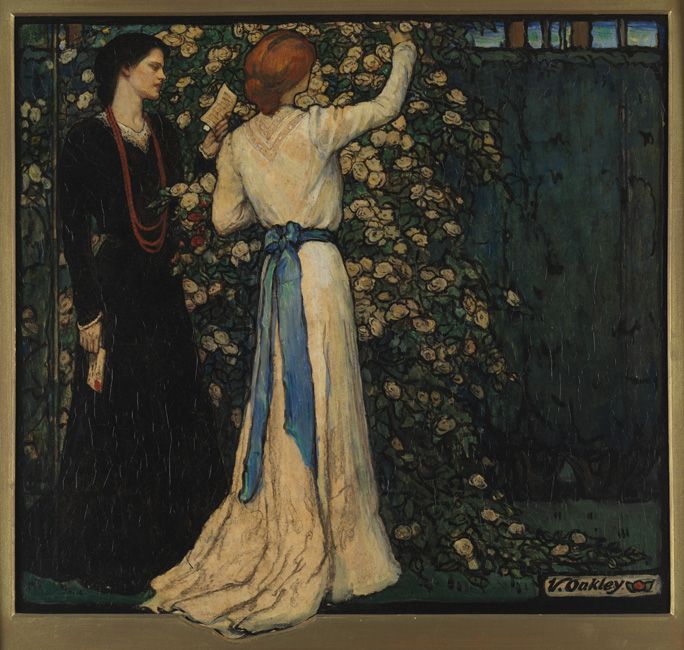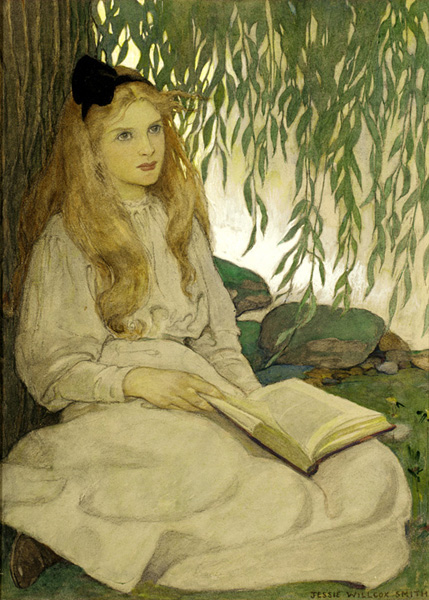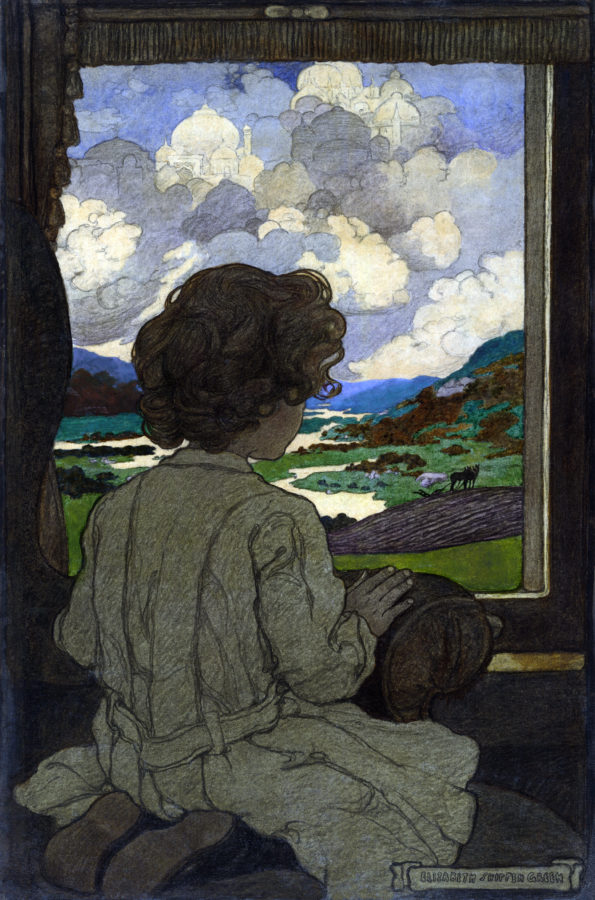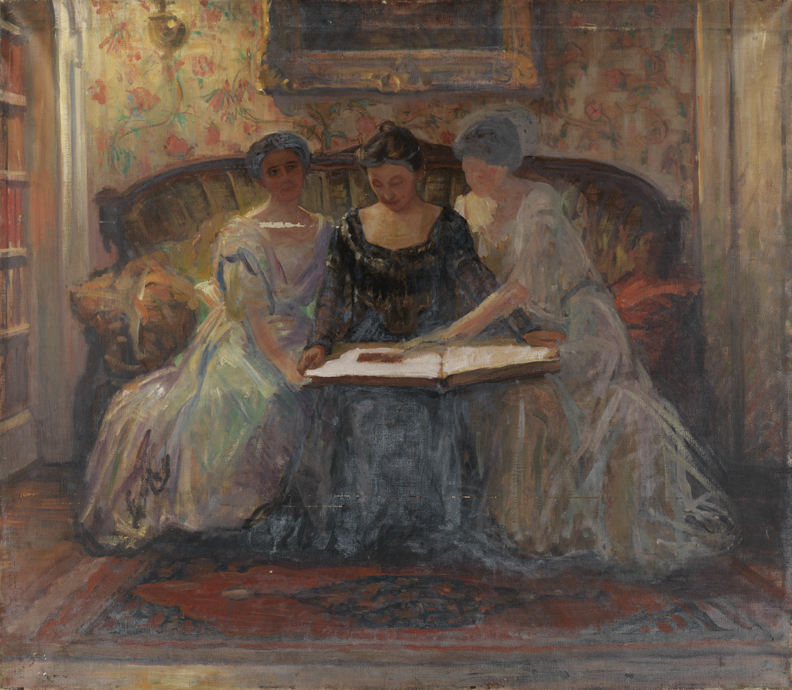Camille Claudel in 5 Sculptures
Camille Claudel was an outstanding 19th-century sculptress, a pupil and assistant to Auguste Rodin, and an artist suffering from mental problems. She...
Valeria Kumekina 24 July 2024
In an old house in Philadelphia at the turn of the twentieth century, four women made their home and their art together. Three decades before Virginia Woolf’s seminal essay A Room of One’s Own was published, they had already discovered the secret to a successful artistic career: money and space of one’s own. They were known as the “Red Rose Girls,” a nickname that came from the first house they shared. Individually, they were all talented and distinguished illustrators, but together, they created a collective that was altogether unique.

The names of Violet Oakley, Elizabeth Shippen Green, and Jessie Willcox Smith are rarely remembered these days, but they achieved significant recognition and success back in their day. The trio built their lives and careers together, sharing a home for over a decade. Though by no means the only active female artists of the period, they were unique in vowing to put their work—and each other— above all other distractions, including marriage.
Art formed part of a fashionable education for women of the era, but they were expected to pursue marriage rather than a career (or, heaven forfend, both). Higher education, including art education, also enforced gender barriers. The Pennsylvania Academy of Fine Art (PAFA) proved a rare exception by allowing gender-segregated life drawing classes—though for the women’s classes, male models remained partly draped for “modesty.” When the artist Thomas Eakins revealed “too much” of a model to one of his classes, he was fired.

Oakley, Green, and Smith all studied at PAFA at various points, but only met in the Drexel Institute drawing class of illustrator Howard Pyle. Illustrations were in high demand for newspapers and periodicals at the time. The “Red Rose Girls” developed their skills as illustrators to earn commissions that would enable them to support themselves – and in Green’s case, to support her parents as well. Supported by their friends’ feedback and advice, each went on to a successful career in her own distinctive yet interrelated style.
Smith specialized in idealized scenes of children. Many of her drawings appeared in the Ladies’ Home Journal and she illustrated a number of popular books, including Robert Louis Stevenson’s A Child’s Garden of Verses. Green held a lucrative contract with Harper’s Magazine for 20 years, providing them with romantic illustrations of Victorian home life – and, unlike Smith, depicting adults as well as children. Oakley expanded from illustrations into murals, becoming the first American woman to earn a public mural commission when she created a series based on the life of William Penn for the State Capitol building in Harrisburg. The women also occasionally collaborated on pieces together, such as the Bryn Mawr College calendar for 1902-1903.

While the group initially shared an apartment on Chestnut Street in Philadelphia, they moved to the converted Red Rose Inn in Villanova in order to expand their studio space. They were joined in their ménage by Henrietta Cozens, who managed the household for them and became a core member of their group, though not an artist herself.
When they lost that tenancy in 1906, they moved together to a home in Chestnut Hill they called Cogslea, after the group acronym they had coined for themselves – COGS, denoting each of their initials. They even signed their notes and referred to themselves as the “Cogs” family, addressing each other with deep affection.
The group’s intense bond was the source of much speculation. In the Victorian era, “romantic friendships” between women were common and involved expressing feelings for each other in effusive language. These relationships were not seen as “dangerous” in the way male homosexual relationships were, but contemporary newspaper articles still found it necessary to assure readers that the artists’ lifestyle met the standards of propriety as they had chaperones in the form of Green’s parents.

The Red Rose Girls were seen as “unconventional,” that curtain-drawing, nose-tapping word for ambiguous relationships – and for women who deviated from any of society’s expectations. What is certain is that the women shared a deep, emotional bond, as evidenced by their pact to live together. Smith and Cozens, the older members of the group, shared a particular attachment to each other that is borne out in their moving and affectionate letters.
In 1911, Elizabeth Green married Huger Elliot after a five-year engagement, and the COGS family was effectively disbanded. The Philadelphia Press’ report of the marriage was strikingly melancholic for a wedding announcement, reporting that “a note of sadness was felt when the realization came that the trio of artists who had lived and worked together so long would be depleted by the absence of Mrs. Elliot.”

Though their relationships were altered by Green’s absence, they all remained in close contact. In 1914, Oakley took over Cogslea, claiming she needed more space for her mural work. Smith and Cozens continued to live together at a new home on the property – called Cogshill – until Smith’s death. Oakley also found a new companion in younger artist Edith Emerson, who assisted on much of Oakley’s later work and remained with her until Oakley’s passing.
Many biographers gloss over the question of the Red Rose Girls’ relationships, or at most, suggest that they were based on familial affection expressed in Victorian hyperbole. But, as Alice Carter points out, that reading is most likely another denial of female sexuality – a comparable group of men would not be assumed to be celibate or asexual. In the end, the most relevant question is perhaps to wonder at our own historical prurience, and our ahistorical desire to label distant eras in modern terms. The most important aspect of the Red Rose Girls’ story is not knowing exactly what kind of relationships they had with each other, but rather learning from the inspiration they shared in their art and the way they lived on their own terms. As one anonymous friend of the group put it so succinctly: “What does it matter if they were orgasmic? The point is that they loved each other.”
Anne Wallentine is a freelance writer with an MA from the Courtauld Institute of Art. Her art history background also informs her role as a creative director for PR and design projects. She is particularly interested in feminist and queer history, Japonisme in American woodblock prints, the politics of Northern Renaissance portraiture, and tracking down the next best coffee or gin.
DailyArt Magazine needs your support. Every contribution, however big or small, is very valuable for our future. Thanks to it, we will be able to sustain and grow the Magazine. Thank you for your help!